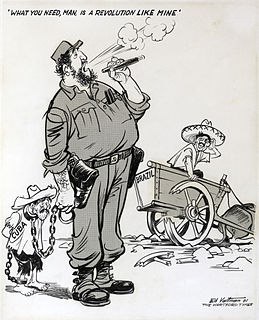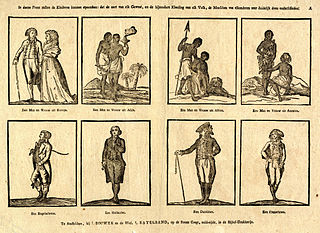Related Research Articles

Prejudice can be an affective feeling towards a person based on their perceived group membership. The word is often used to refer to a preconceived evaluation or classification of another person based on that person's perceived political affiliation, sex, gender, gender identity, beliefs, values, social class, age, disability, religion, sexuality, race, ethnicity, language, nationality, culture, complexion, beauty, height, occupation, wealth, education, criminality, sport-team affiliation, music tastes or other personal characteristics.
In sociolinguistics, an accent is a manner of pronunciation peculiar to a particular individual, location, region or nation. An accent may be identified with the locality in which its speakers reside, the socioeconomic status of its speakers, their ethnicity, their caste or social class, or influence from their first language.
A minority group, by its original definition, refers to a group of people whose practices, race, religion, ethnicity, or other characteristics are fewer in numbers than the main groups of those classifications. However, in present-day sociology, a minority group refers to a category of people who experience relative disadvantage as compared to members of a dominant social group. Minority group membership is typically based on differences in observable characteristics or practices, such as: ethnicity, race, religion, sexual orientation, or disability. The framework of intersectionality can be used to recognize that an individual may simultaneously hold membership in multiple minority groups. Likewise, individuals may also be part of a minority group in regard to some characteristics, but part of a dominant group in regard to others.
The implicit-association test (IAT) is a controversial assessment intended to detect subconscious associations between mental representations of objects (concepts) in memory. Its best-known application is the assessment of implicit stereotypes held by test subjects, such as associations between particular racial categories and stereotypes about those groups. The test has been applied to a variety of belief associations, such as those involving racial groups, gender, sexuality, age, and religion but also the self-esteem, political views, and predictions of the test taker. The implicit-association test is the subject of significant academic and popular debate regarding its validity, reliability, and usefulness in assessing implicit bias.
Stereotype threat is a situational predicament in which people are or feel themselves to be at risk of conforming to stereotypes about their social group. It is theorized to be a contributing factor to long-standing racial and gender gaps in academic performance. Since its introduction into the academic literature, stereotype threat has become one of the most widely studied topics in the field of social psychology.
In sociology, racialization or ethnicization is a political process of ascribing ethnic or racial identities to a relationship, social practice, or group that did not identify itself as such. Racialization or ethnicization often arises out of the interaction of a group with a group that it dominates and ascribes a racial identity for the purpose of continued domination and social exclusion; over time, the racialized and ethnicized group develop the society enforced construct that races are real, different and unequal in ways that matter to economic, political and social life, an unhealthy norm that strips them from their dignity of a full humanity. These processes have been common throughout the history of imperialism, nationalism, racial and ethnic hierarchies.
System justification theory (SJT) is a theory within social psychology that system-justifying beliefs serve a psychologically palliative function. It proposes that people have several underlying needs, which vary from individual to individual, that can be satisfied by the defense and justification of the status quo, even when the system may be disadvantageous to certain people. People have epistemic, existential, and relational needs that are met by and manifest as ideological support for the prevailing structure of social, economic, and political norms. Need for order and stability, and thus resistance to change or alternatives, for example, can be a motivator for individuals to see the status quo as good, legitimate, and even desirable.

Stereotypes of Hispanic and Latino Americans in the United States are general representations of Americans considered of Hispanic and Latino ancestry or immigrants to the United States from Spain or Latin America, often exhibited in negative caricatures or terms. Latin America is generally considered to comprise all of the politically independent territory of the Western Hemisphere other than Canada and the United States that was originally colonized by the Spaniards or Portuguese. "Latino" is the umbrella term for people of Latin American descent that in recent years has supplanted the more imprecise and bureaucratic designation "Hispanic." Part of the mystery and the difficulty of comprehension lie in the fact that the territory called Latin America is not homogeneous in nature or culture. Latin American stereotypes have the greatest impact on public perceptions, and Latin Americans were the most negatively rated on several characteristics. Americans' perceptions of the characteristics of Latin American immigrants are particularly strongly linked to their beliefs about the impact of immigration, especially on unemployment, schools, and crime.
Oppositional culture, also known as the "blocked opportunities framework" or the "caste theory of education", is a term most commonly used in studying the sociology of education to explain racial disparities in educational achievement, particularly between white and black Americans. However, the term refers to any subculture's rejection of conformity to prevailing norms and values, not just nonconformity within the educational system. Thus many criminal gangs and religious cults could also be considered oppositional cultures.
Internalized racism is a form of internalized oppression, defined by sociologist Karen D. Pyke as the "internalization of racial oppression by the racially subordinated." In her study The Psychology of Racism, Robin Nicole Johnson emphasizes that internalized racism involves both "conscious and unconscious acceptance of a racial hierarchy in which whites are consistently ranked above people of color." These definitions encompass a wide range of instances, including, but not limited to, belief in negative stereotypes, adaptations to white cultural standards, and thinking that supports the status quo.
Occupational inequality is the unequal treatment of people based on gender, sexuality, height, weight, accent, or race in the workplace. When researchers study trends in occupational inequality they usually focus on distribution or allocation pattern of groups across occupations, for example, the distribution of men compared to women in a certain occupation. Secondly, they focus on the link between occupation and income, for example, comparing the income of whites with blacks in the same occupation.

Elitism is the belief or notion that individuals who form an elite—a select group of people perceived as having an intrinsic quality, high intellect, wealth, power, notability, special skills, or experience—are more likely to be constructive to society as a whole, and therefore deserve influence or authority greater than that of others. The term elitism may be used to describe a situation in which power is concentrated in the hands of a limited number of people. Beliefs that are in opposition to elitism include egalitarianism, anti-intellectualism, populism, and the political theory of pluralism.
Aversive racism is a theory proposed by Samuel L. Gaertner & John F. Dovidio (1986), according to which negative evaluations of racial/ethnic minorities are realized by a persistent avoidance of interaction with other racial and ethnic groups. As opposed to traditional, overt racism, which is characterized by overt hatred for and discrimination against racial/ethnic minorities, aversive racism is characterized by more complex, ambivalent expressions and attitudes nonetheless with prejudicial views towards other races. Aversive racism arises from unconscious personal beliefs taught during childhood. Subtle racist behaviors are usually targeted towards African Americans. Workplace discrimination is one of the best examples of aversive racism. Biased beliefs on how minorities act and think affect how individuals interact with minority members.

In social psychology, a stereotype is a generalized belief about a particular category of people. It is an expectation that people might have about every person of a particular group. The type of expectation can vary; it can be, for example, an expectation about the group's personality, preferences, appearance or ability. Stereotypes are sometimes overgeneralized, inaccurate, and resistant to new information, but can sometimes be accurate.

Expectation states theory is a social psychological theory first proposed by Joseph Berger and his colleagues that explains how expected competence forms the basis for status hierarchies in small groups. The theory's best known branch, status characteristics theory, deals with the role that certain pieces of social information play in organizing these hierarchies. More recently, sociologist Cecilia Ridgeway has utilized the theory to explain how beliefs about status become attached to different social groups and the implications this has for social inequality.
Ambivalent prejudice is a social psychological theory that states that, when people become aware that they have conflicting beliefs about an outgroup, they experience an unpleasant mental feeling generally referred to as cognitive dissonance. These feelings are brought about because the individual on one hand believes in humanitarian virtues such as helping those in need, but on the other hand also believes in individualistic virtues such as working hard to improve one's life.
In social identity theory, an implicit bias or implicit stereotype, is the pre-reflective attribution of particular qualities by an individual to a member of some social out group.
Societal racism is the theory of formalization of a set of institutional, historical, cultural and interpersonal practices within a society that places one or more social or ethnic groups in a better position to succeed and disadvantages other groups so that disparities develop between the groups over a period of time. Societal racism has also been called structural racism, because, according to Carl E. James, society is structured in a way that excludes substantial numbers of people from minority backgrounds from taking part in social institutions. Societal racism is sometimes referred to as systemic racism as well.
There is a great deal of research on the factors that lead to the formation of prejudiced attitudes and beliefs. There is also a lot of research on the consequences of holding prejudiced beliefs and being the target of such beliefs. It is true that advances have been made in understanding the nature of prejudice. A consensus on how to end prejudice has yet to be established, but there are a number of scientifically examined strategies that have been developed in attempt to solve this social issue.
References
- 1 2 3 4 Webster Jr, Murray; James E. Driskell Jr (April 1978). "Status Generalization: A Review and Some New Data". American Sociological Review. 43 (2): 220–236. doi:10.2307/2094700. JSTOR 2094700.
- 1 2 Brezina, Timothy; Kenisha Winder (December 2003). "Economic Disadvantage, Status Generalization, and Negative Racial Stereotyping By White Americans". Social Psychology Quarterly. 66 (4): 402. doi:10.2307/1519837. JSTOR 1519837.
- ↑ Munroe, Paul Thomas (March 2002). Creating a legitimated power and prestige order: The impact of status consistency and performance evaluations on expectations for competence and status (Thesis). ProQuest 619962300.
- ↑ Oldmeadow, Julian; Platow, Michael; Foddy, Margaret (2005). "Task-groups as self-categories: A social identity perspective on status generalization". Current Research in Social Psychology. hdl:1885/51335.